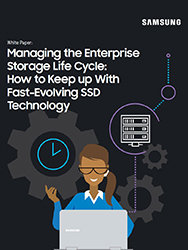Data is the lifeblood of any organization. Despite the high costs of equipment, internet connectivity and applications, the data that resides in a data center is worth more, and its loss can have long-lasting repercussions on a business. According to Unitrends, as many as 93 percent of businesses who experienced a long data outage went bankrupt within a year.
A recent study by Uptime Institute indicated that data center budgets stayed strong in 2017. The study states that, compared to 2016, “nearly 75 percent of companies’ data center budgets have increased or stayed consistent this year.”
IT resilience is also growing, complementing redundancy. Resilience allows workloads that fail or stop responding to be restarted on other virtual machines on other servers. The study found that most companies use multiple, geographically separate data centers so that a workload at one location can failover to another location. At the same time, 73 percent of respondents said they are continuing to use redundancy in physical data center sites despite increased adoption of failover.
According to the study, “more than 90 percent of data center and IT professionals believe their corporate management is more concerned about outages now than they were just a year ago.” This may also be due to widely publicized ransomware attacks and hacking incidents that resulted in the loss or theft of data.
While 90 percent of organizations conduct root cause analysis of any IT outage, only 60 percent report that they measure the cost of downtime as a business metric, which is a surprise, given that reported costs of downtime can range from hundreds to hundreds of thousands of dollars per hour.
Automating Backups and Streamlining Resiliency
Resiliency is based on virtualization, which allows workloads to failover from one server to another. The second server may be located in the same data center, in another data center or in the cloud.
Manage the Enterprise Storage Life Cycle
Download this guide to improve your storage planning and evaluation processes. Download Now
Typically, a virtual server is backed up to a second location, and if the first workload fails for some reason, both the data and the server are already at the second location, so the server can be started up there and migrated back to the primary data center once the problem is fixed. Depending on the backup and management software, the second server can automatically start the workload in as little as a minute or two if the primary fails.
The process of automating the failover to the second site is the same whether the data is in data centers owned by the company or part of the public cloud. Many backup vendors offer the ability to back up to their cloud and, in the event of a failure, spin up the server in their cloud using up-to-date backups in very little time. In addition, many organizations now employ a high-availability clusted model, in which data is constantly replicated between two locations, so that additional nodes can spin up with zero down-time.
Implementing Redundancy and Establishing Data Security
In addition to IT resilience based on virtualization, redundancy ensures that data is not lost if there’s a mechanical or electronic failure in the storage system. The simplest version of redundancy is RAID, which works at the volume level to ensure that a failure of one or more drives will not result in lost data.
Beyond RAID, replication at the storage array can ensure that even the loss of an entire storage area network (SAN) or network attached storage (NAS) system will not result in data loss, since the entire system is replicated on another system, which can be in the same or different data centers in company-owned locations or in the cloud.
Outside of the array level, object-based systems distribute parts of files across multiple data centers so that any file can be reconstructed even if an entire location goes offline.
Both IT resilience and redundancy are necessary parts of an overall data security policy. There are many different types of problems that can take workloads offline or result in loss of data, from power outages at one location, to natural disasters, to ransomware or other malware, to software crashes or hardware failures.
No single strategy can guarantee success in coming back from a problem; a good system uses all available means to ensure data security. After all, lost productivity from a system being offline for a few hours can be expensive, but re-creating data after a virus has encrypted all the data on a server and destroyed the backups has the potential to bankrupt a company.
By using these techniques, enterprises with vast amounts of data within servers and data centers can ensure it can be easily maintained and restored at a moment’s notice.
Find the best storage solutions for your business by checking out our award-winning selection of SSDs for the enterprise.








